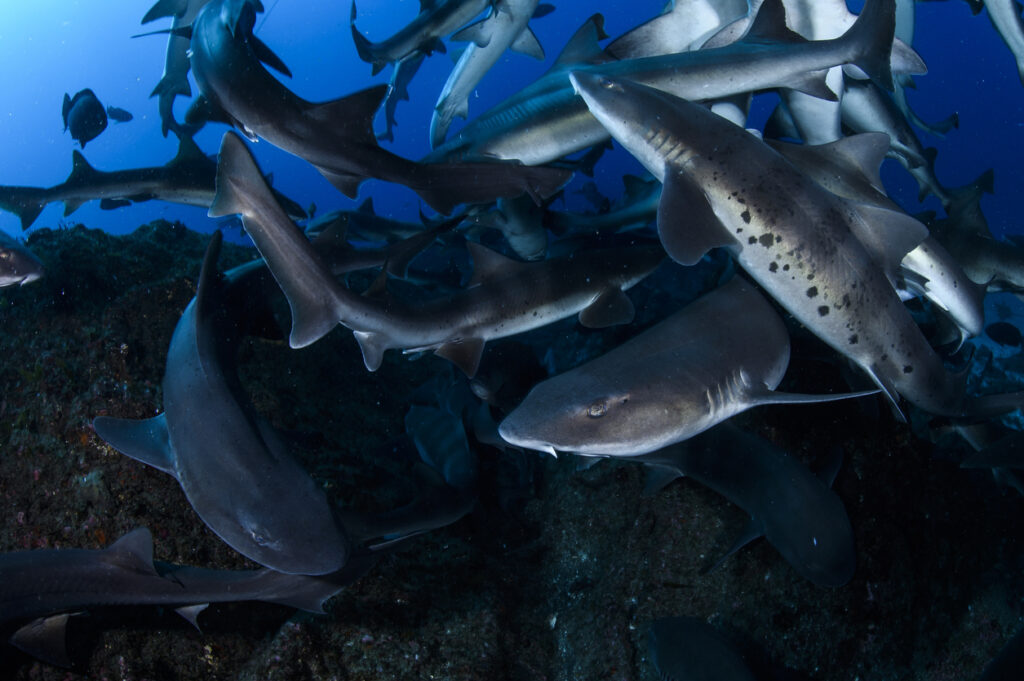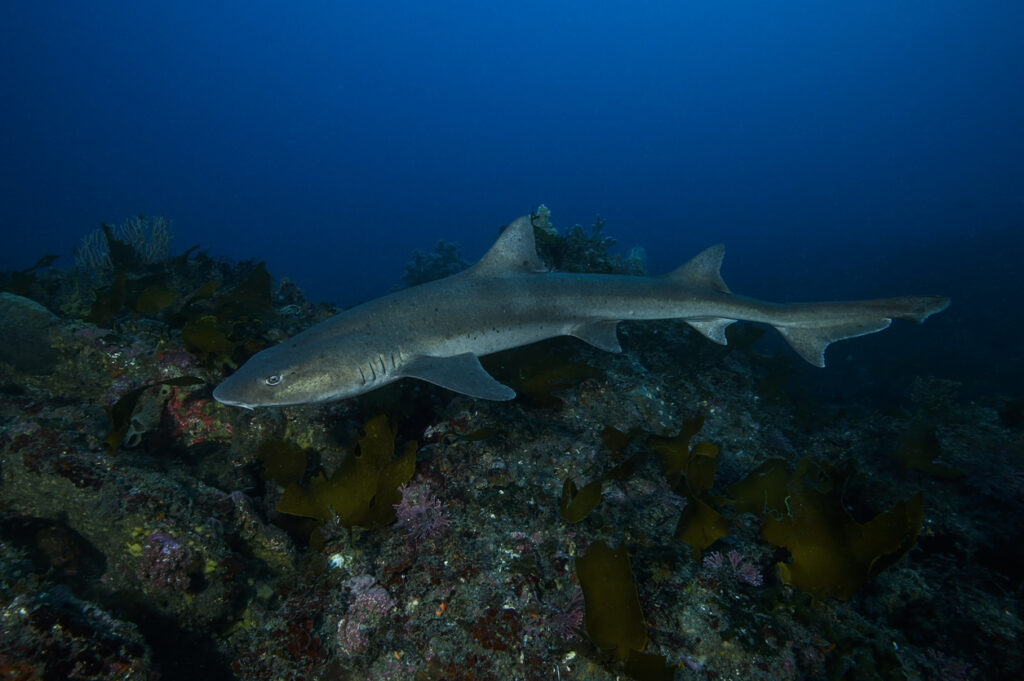When you think of sharks, you might have an image in your head from a certain Spielberg film. A ferocious predator out for blood. However, this Hollywood caricature does these incredible animals a disservice.
There are more than 500 species of shark that can be found in today’s oceans. These range from tiny Dwarf Lantern Sharks to huge Whale Sharks, each with their own set of unique characteristics. In this blog, we’ll tell you all about the Japanese Banded Houndshark (Triakis scyllium): where you can find them, how you can spot them and what makes them one of our favourite dorsal-finned friends.
They can grow up to 1.5 metres long
Although they’re not the biggest sharks in the world, an accolade that sits firmly with the massive whale shark, these awesome fish can grow up to 150cm, so still pretty big. The female Japanese Banded Houndsharks are slightly bigger than their male counterparts, reaching their full size between 106cm-117cm after 6-7 years, compared to the males who grow up to 93-103cm. Some individuals have been known to grow up to 150cm.
Japanese Banded Houndsharks have distinctive black rings around their bodies
Banded Houndsharks are known for their distinctive black rings that circle around their slender bodies, which gives them their name. It’s worth nothing that these markings do fade with age. Houndsharks more generally are known for their oval-shaped eyes, two large, spineless dorsal fins, and a single anal fin.
Like most sharks, the Japanese Banded Houndshark has five gill slits on either side of its body.
Be sure to be on the lookout for this beautiful creature when you visit Coral Seas at Bristol Aquarium.

They are typically bottom dwellers
Similar to a typical moody teenager, Banded Houndsharks are solitary and largely nocturnal, meaning they sleep through the day and are active at night. During the night, they tend to stick near structures and the ocean floor, at depths of about 150m, to avoid larger fish that might target them as prey. This means they are known as bottom dwellers.
They are primarily solitary animals, although they have been known to come together with there is an abundance of food. They also have a funny habit of piling on top of each other on the sea floor, particularly when they are resting.
Banded Houndsharks are ovoviviparous
Most species of shark give birth to live young, but the Houndsharks give birth through the process of ovoviviparity. This means their young are formed from eggs, which are carried inside the mother to provide extra safety from potential predators. The egg will hatch inside the mother who can then give birth to the live young.
In one litter, Houndsharks can lay up to 42 pups! Houndshark pups take between 9 and 12 months to fully grow inside their mother. If you think 42 sounds like a lot of babies, some other species of shark like blue sharks can give birth to more than a hundred at once!
You’ll find Banded Houndsharks off the coast of Japan
The clue really is in the name as to where you’ll find the Japanese Banded Houndshark! They live in the North-Western section of the Pacific Ocean close to places like Japan, China, Korea and even Southern Russia.
Sharks can be found throughout the whole world in saltwater (oceans and seas), although some species call rivers and lakes their home such as bull sharks and, funnily enough, river sharks.
In the UK, you’re unlikely to see a houndshark, but you will see smooth-hound sharks which are in the same family! This species is often found off the coast of the UK. There are over 20 shark species that call the UK their home including the Lesser Spotted Catshark – which you can also see here at Bristol Aquarium!

Banded Houndsharks are considered endangered
According to the IUCN Red List, Banded Houndsharks are considered endangered. Their numbers in the wild are decreasing mainly due to bycatching – accidental catching of fish. However, there is a growing market for shark fins for dishes such as shark fin soup, which is popular in Chinese cuisine.
Because sharks are apex predators, their population decreasing can have a drastic impact on the wider health of the marine ecosystem because other populations are not kept in check.
Those were just some of the incredible facts about Banded Hound Sharks. We hope we’ve helped to reveal a little bit more about these incredible sharks and to know that there is more to them than just what you see in the movies. If you’d like to learn more about these animals, you can book your tickets and ask one of our trainers down at Bristol Aquarium.
